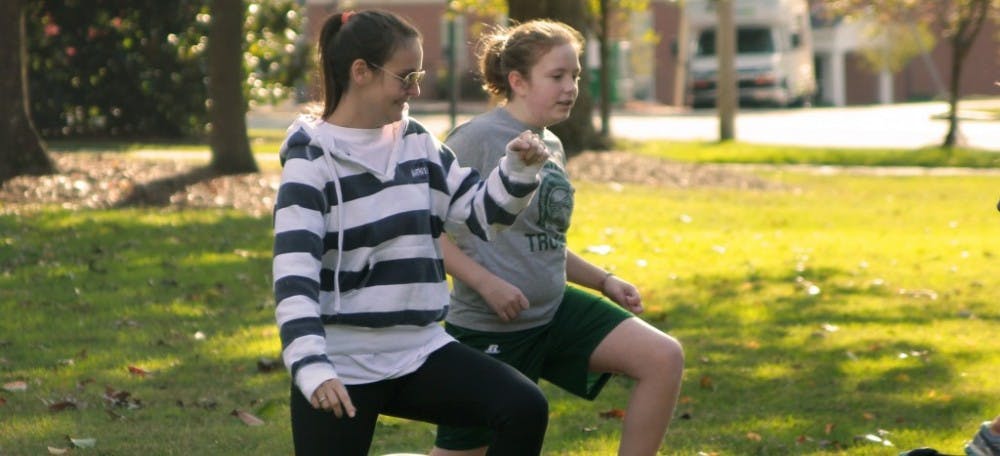It is uncommon for an artist to share his or her work before completion.
In an attempt to break this tradition, students of the Choreography I and II classes performed their works-in-progress for the seventh annual Choreography Salon. A small audience gathered in Studio A of the Center for the Arts Oct. 18 to see what the dancers had been working on this semester and what they could do to improve.
The philosophy behind the salon is derived from the French tradition of performing uncompleted works in an intimate setting, which encourages conversation between the audience and dancers, so the latter can receive feedback and use it to improve their work, said Jen Metcalf, assistant professor of dance.
“This is a rough draft of my entire piece, and I think it is important for students to come here and provide us with feedback,” said sophomore Nina Sunderland, a member of the Choreography I class. “We want everyone to come out and support the arts. I think it’s important to hear what artists and non-artists have to say.”
Throughout the evening, the multi-talented group of students presented works as choreographers, performed as dancers in their peers’ pieces and ran technical aspects while not performing on stage.
Before introducing the choreographers and their pieces, Metcalf reminded audience members they were in a space free of judgment.
“I encourage you to look at [these works] with open eyes and maybe treat it like you are reading a poem,” Metcalf said. She said she encouraged audience members to share moments that struck them because it could end up being helpful to the dancers.
Metcalf and other faculty members referred to these opportunities as “green highlighter moments” throughout the evening.
Dancers and faculty in attendance echoed her remarks, encouraging the audience to continue to speak up since their opinions were highly valued.
“I think that the performing arts are so important in culture and in learning how different people express themselves, especially at a liberal arts university,” said senior Victoria Webster, a BFA acting major. “Dance and music are expressions without words and altogether something beautiful that everyone can benefit from.”
The first show began at 6 p.m. and featured works from the Choreography II class, in which students choreographed works for four to six dancers of their choosing.
One of the standout pieces was junior Rachel Mehaffey’s “A Transitional Season,” which was set to the tune “White Christmas” as performed by The Drifters. This work humored the audience members with subtle comedy.
In the question-and-answer session, some dancers learned they needed to provide the audience with more context in order to ensure understanding. In contrast, others learned ambiguity was more fitting.
“Contemporary dance is not knowing exactly what it’s about,” said Karl Green, assistant professor of performing arts. “It’s up to each individual audience member to figure it out.”
At 8 p.m., the students of the Choreography I class presented their work. These pieces differed from the former showings since they consisted of only solos and duets.
Although a year younger than their peers, the students of the Choreography I class produced work of similar quality to the dancers of the Choreography II class.
The Choreography I and II classes will be presenting the final version of their dances Dec. 2 and 3. It will be presented in the same order in Studio A with a showing at 6 p.m. and 8 p.m. both days.


